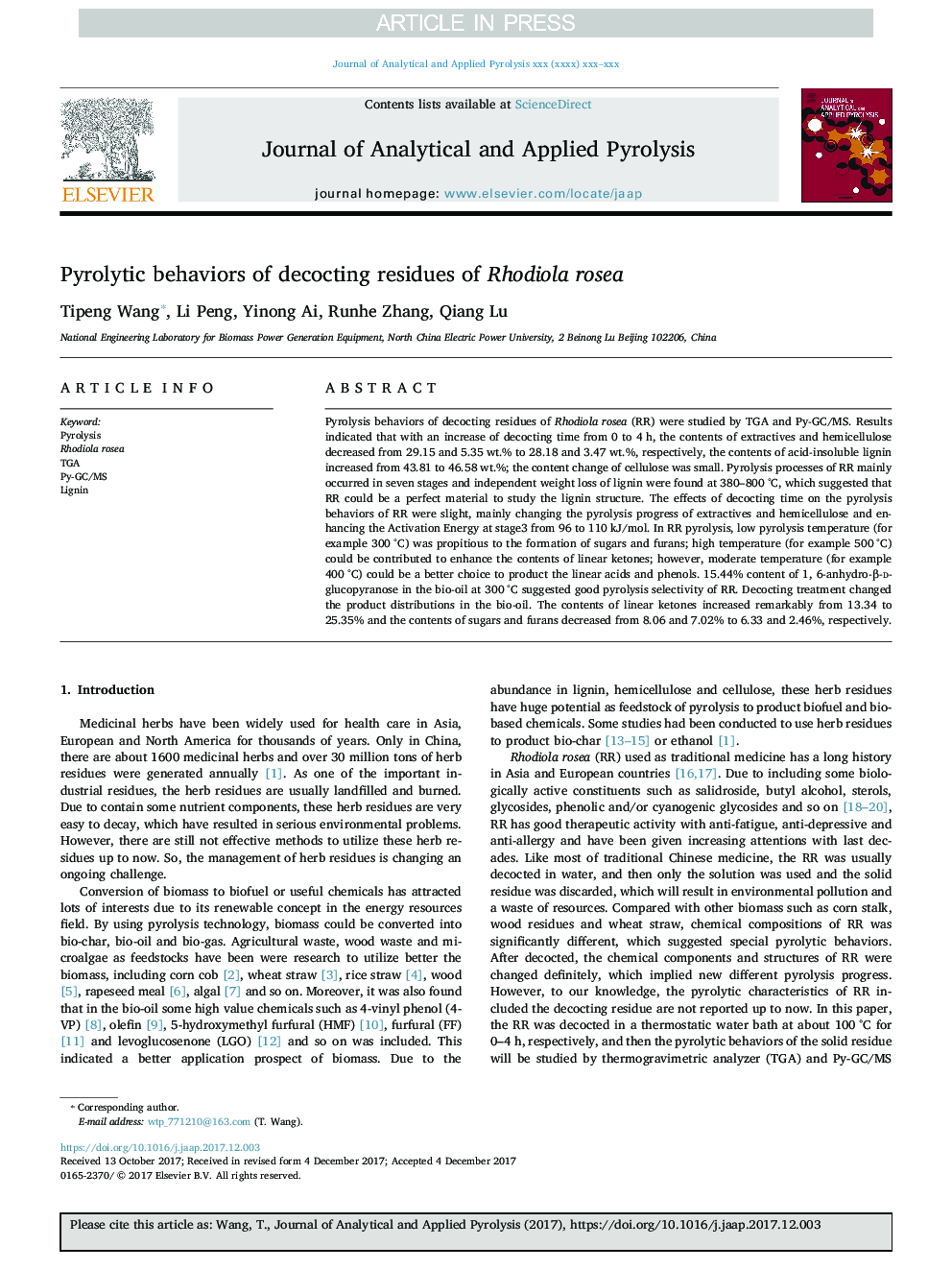| کد مقاله | کد نشریه | سال انتشار | مقاله انگلیسی | نسخه تمام متن |
|---|---|---|---|---|
| 7606398 | 1492948 | 2018 | 5 صفحه PDF | دانلود رایگان |
عنوان انگلیسی مقاله ISI
Pyrolytic behaviors of decocting residues of Rhodiola rosea
ترجمه فارسی عنوان
رفتارهای پیلوتیک از بقایای ریشهولیا رزا
دانلود مقاله + سفارش ترجمه
دانلود مقاله ISI انگلیسی
رایگان برای ایرانیان
موضوعات مرتبط
مهندسی و علوم پایه
شیمی
شیمی آنالیزی یا شیمی تجزیه
چکیده انگلیسی
Pyrolysis behaviors of decocting residues of Rhodiola rosea (RR) were studied by TGA and Py-GC/MS. Results indicated that with an increase of decocting time from 0 to 4 h, the contents of extractives and hemicellulose decreased from 29.15 and 5.35 wt.% to 28.18 and 3.47 wt.%, respectively, the contents of acid-insoluble lignin increased from 43.81 to 46.58 wt.%; the content change of cellulose was small. Pyrolysis processes of RR mainly occurred in seven stages and independent weight loss of lignin were found at 380-800 °C, which suggested that RR could be a perfect material to study the lignin structure. The effects of decocting time on the pyrolysis behaviors of RR were slight, mainly changing the pyrolysis progress of extractives and hemicellulose and enhancing the Activation Energy at stage3 from 96 to 110 kJ/mol. In RR pyrolysis, low pyrolysis temperature (for example 300 °C) was propitious to the formation of sugars and furans; high temperature (for example 500 °C) could be contributed to enhance the contents of linear ketones; however, moderate temperature (for example 400 °C) could be a better choice to product the linear acids and phenols. 15.44% content of 1, 6-anhydro-β-d-glucopyranose in the bio-oil at 300 °C suggested good pyrolysis selectivity of RR. Decocting treatment changed the product distributions in the bio-oil. The contents of linear ketones increased remarkably from 13.34 to 25.35% and the contents of sugars and furans decreased from 8.06 and 7.02% to 6.33 and 2.46%, respectively.
ناشر
Database: Elsevier - ScienceDirect (ساینس دایرکت)
Journal: Journal of Analytical and Applied Pyrolysis - Volume 129, January 2018, Pages 61-65
Journal: Journal of Analytical and Applied Pyrolysis - Volume 129, January 2018, Pages 61-65
نویسندگان
Tipeng Wang, Li Peng, Yinong Ai, Runhe Zhang, Qiang Lu,
